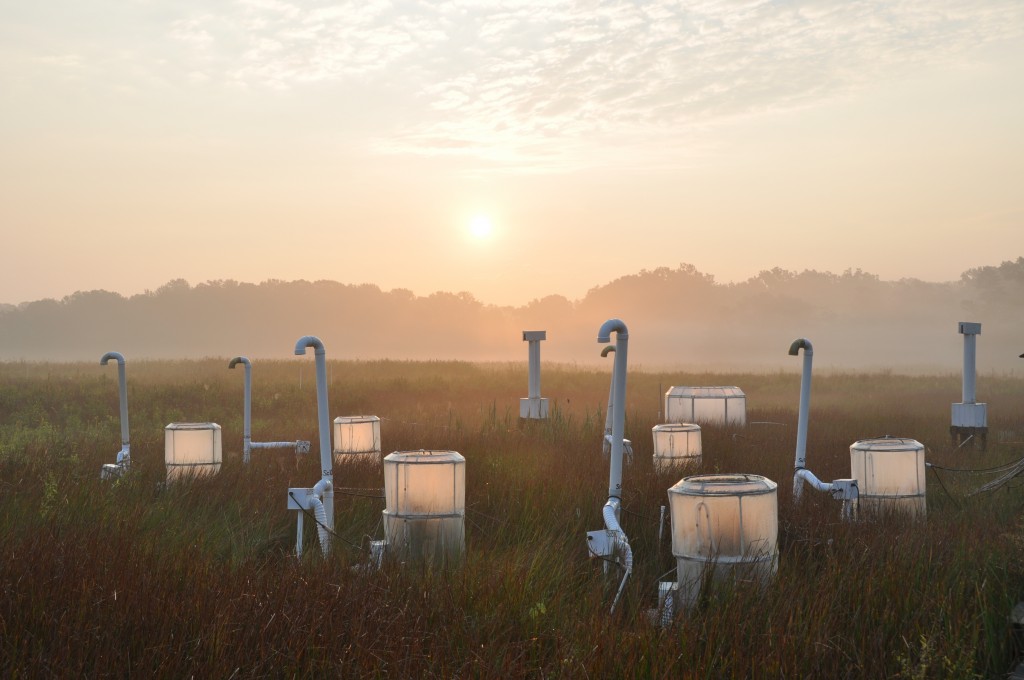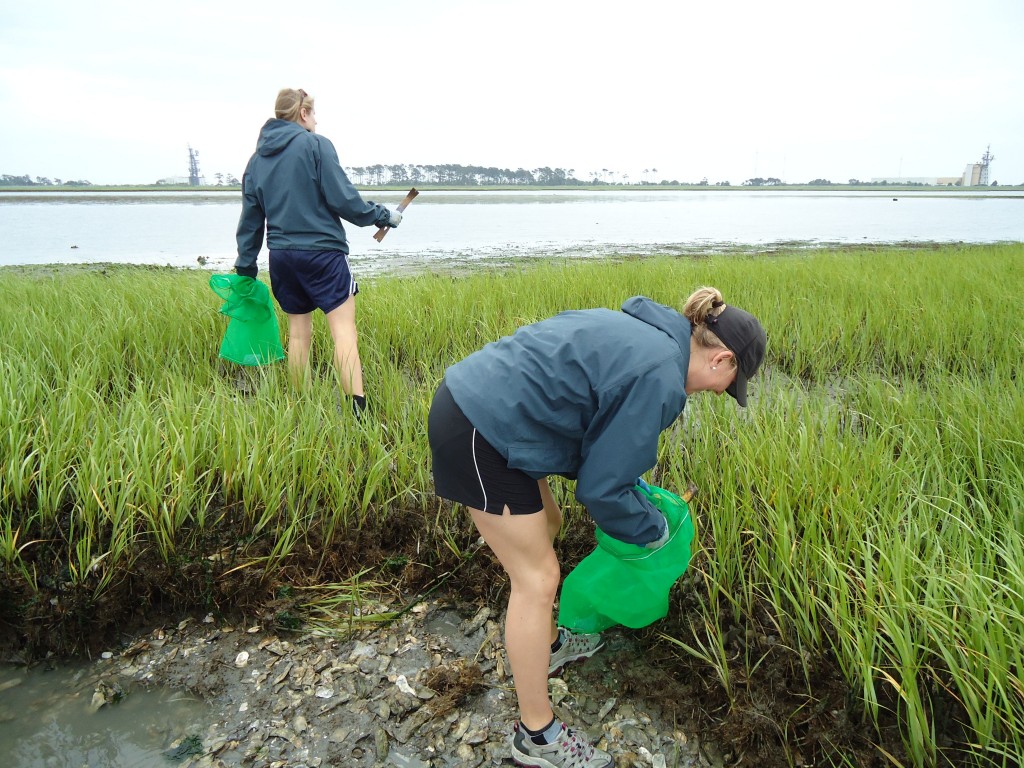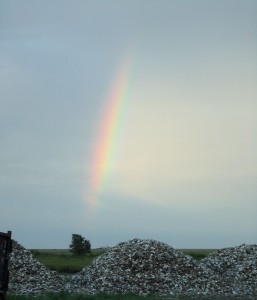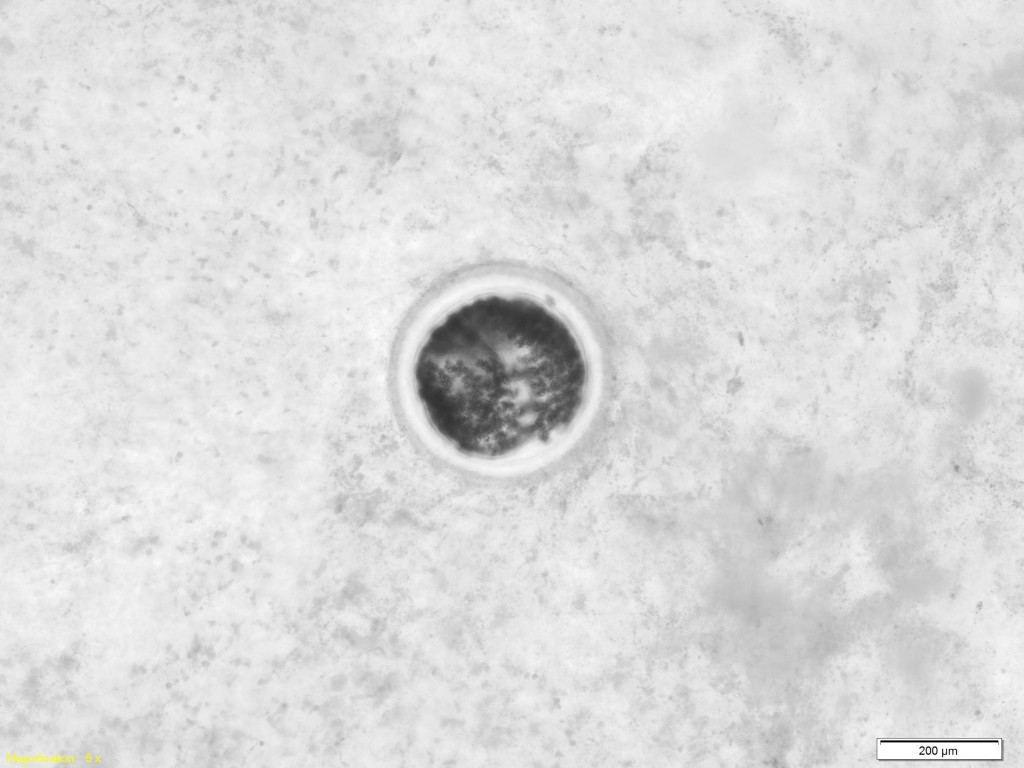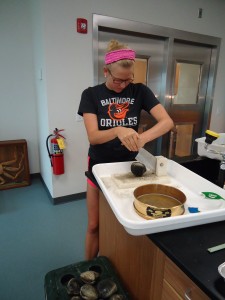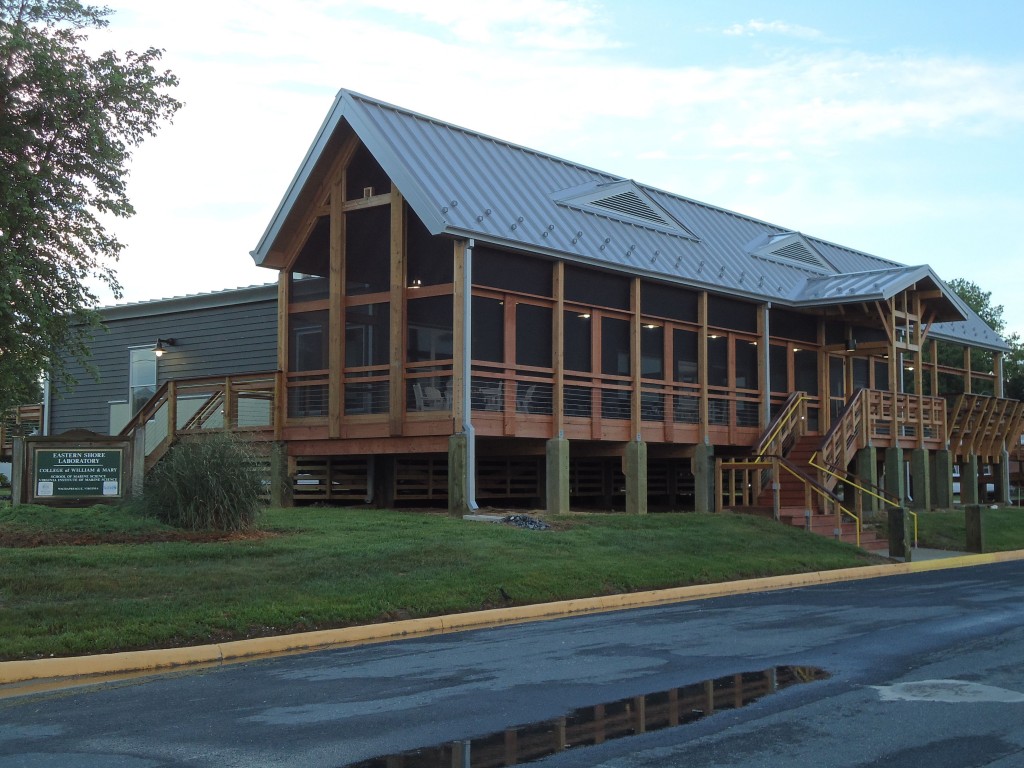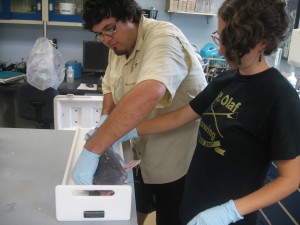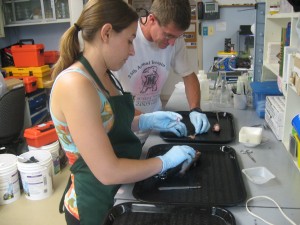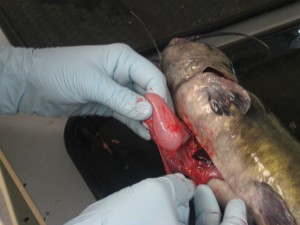by Megan Riley
University of South Carolina Ph.D. student; Smithsonian Marine Station visiting scientist
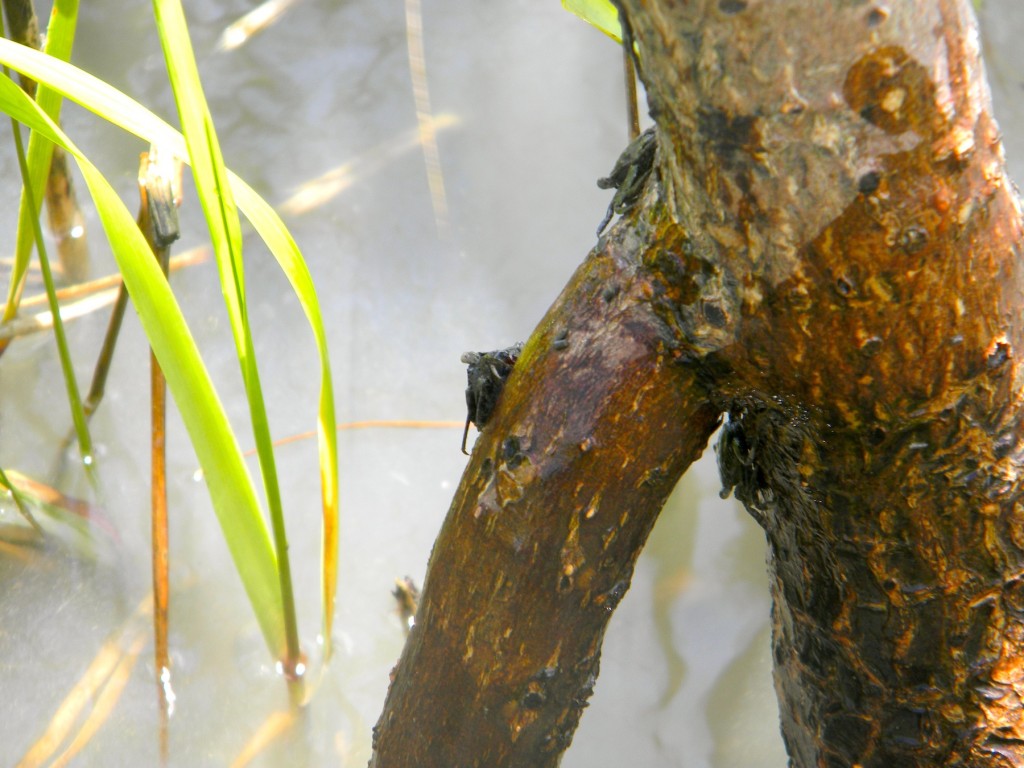
Mangrove tree crabs crowd onto a dwarf red mangrove, in a hybrid mangrove-marsh region. (Megan Riley)
Home for most species largely depends on climate: temperature, light and rainfall. With changes in global climate trends, many plants and animals are expanding their geographic limits poleward. However, not all species in a community respond to these changes in the same way.
Organisms often differ in the type and timing of their responses to environmental changes. Sometimes, animals expand more quickly than the habitats they’re used to. When this happens, these organisms are forced to colonize unfamiliar habitats where they often face numerous challenges, like resource shortages and never-before-seen predators.
So how do these animals alter their behavior, resource use and reproductive strategy to succeed in their new habitats? I aim to explore just that question by studying the range expansion of the mangrove tree crab Aratus pisonii into salt marsh habitats.
Mangrove tree crabs are native to Florida and abundant throughout Floridian mangroves, where they are the dominant herbivores of fresh mangrove leaves. Like mangrove trees, they have slowly begun moving northward. But the crabs are moving faster than the mangroves—and they’ve begun to invade salt marsh territory. They can be found crowding onto isolated dwarf mangroves nestled amidst cord grass, as well as in salt marshes with no mangroves in sight!How mangroves are taking over marshes
Because mangrove tree crabs in their native habitats rely heavily on mangroves for food and shelter, their habitat shift into salt marshes also causes a diet shift that can impact their growth, survival and reproduction. By focusing on the range expansion of mangrove tree crabs into salt marshes during my time at the Smithsonian Marine Station this summer, I hope to shed light on what exactly is enabling this species and countless others to successfully expand their range into new environments.



